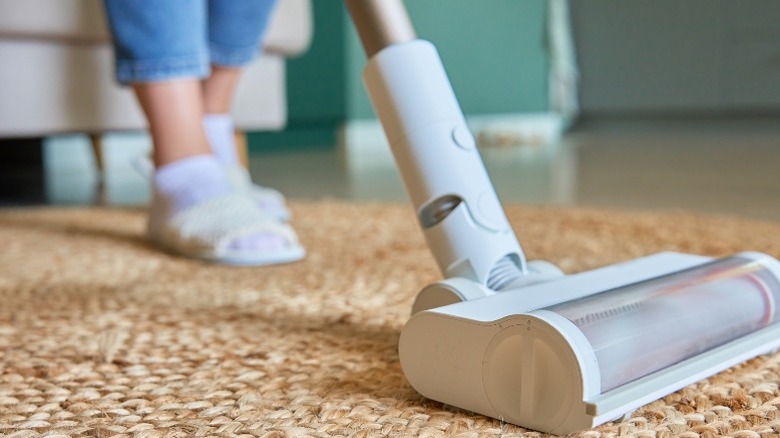The Singular Tool Technique That Reduces Mental Stress When Cleaning
Cleaning your house can be overwhelming when you're facing sweeping, mopping, dusting, straightening up (which can easily overflow into decluttering), washing windows — where does one start? It's so easy to get stuck and wind up watching every season of Friends instead of cleaning. That's where the "one tool method" comes in to keep things simple and achievable. Instead of trying to do everything at once, this technique lets you focus on using one weapon of choice at a time.
With the one tool approach, you pick a single cleaning item (like a broom, mop, or duster) and only use that tool for your cleaning session. Clean one area with that tool until it's finished, then move on to the next. Besides being an easy, low-friction way to get the ball rolling on chores, this approach could also help clear your mind because you're not jumping around trying to use different tools at once and get an area perfectly clean. Having at it with one tool is less mentally exhausting than repeatedly switching between dusting, scrubbing, vacuuming, mopping, polishing, and tidying. Going over as much of your space as you want with one tool is guaranteed to render things noticeably cleaner, creating an immediate win that's bound to get your dirt-busting momentum off the ground. Before you arm yourself with your single cleaning tool for the day, it might be advisable to do a quick and easy 10-minute declutter and
How to use the one tool method
Using the one tool method is super simple, and you don't need any fancy gear. Pick the tool that seems easiest or the one that will best clean the area (or type of dirt) you need to focus on right now — such as a vacuum, mop, or a cloth for dusting. Or, maybe you're in the mood to grab a spray bottle of your favorite cleaning solution and start busting grime on cabinet fronts, light switch plates, door handles, etc. Begin by tackling one room and clean as much as you can with the tool you chose. Set a timer for your cleaning session (you could test drive the 20/10 cleaning rule or use the 1-hour cleaning shift strategy), and when it goes off, you can choose whether to keep at it, take a break, or stop completely.
When you finish with one tool, take a minute to admire what you accomplished, then head to the next room if you're still motivated and have time to continue. For example, start vacuuming the living room then move into the kitchen with only the vacuum. Don't worry about dusting or mopping; your one tool is your guide to what to clean. You might only end up with a cleaner kitchen and living room floor — or, you may wind up vacuuming the whole house in a surprisingly short space of time. Focusing on a single tool could also cause you to make fuller use of it, (for instance, you might at last figure out the right way to use all the attachments on your vacuum). This method might not get every surface and crevice gleaming in one go, but it makes starting easy, will result in a cleaner space, and probably motivate you to grab the next tool and tackle other areas of your house.

